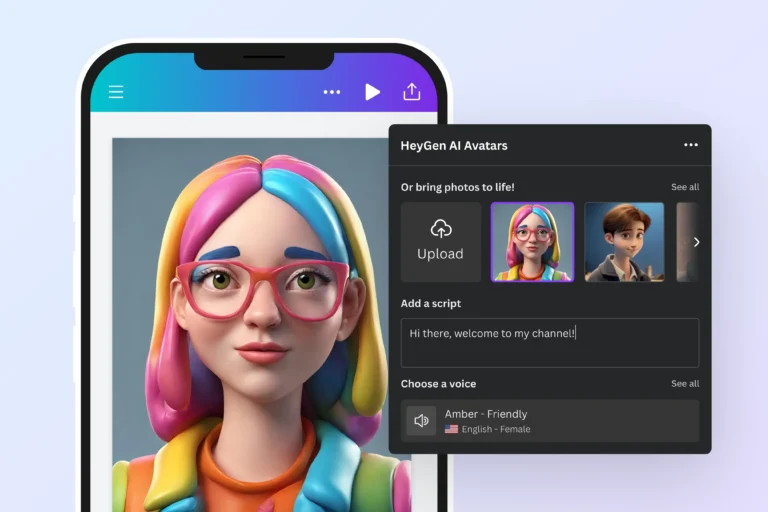Transforming Business Processes with Enterprise-Scale Generative AI
What Is Generative AI?
Generative artificial intelligence is redefining what’s possible in business automation and innovation, acting as a catalyst for dynamic change within organizations. Unlike traditional AI models, which typically focus on data analysis or pattern recognition, generative AI leverages advanced neural networks to create new, meaningful content actively—be it natural language, images, programming code, or even simulations. Its value is especially apparent as businesses seek efficient ways to harness their data, streamline operations, and speed up creative processes without compromising quality.
Many organizations are turning to advanced digital tools, such as asset performance management software, that seamlessly integrate generative AI capabilities. Generative AI solutions are revolutionizing decision-making, equipment prediction, workflow optimization, and recommendation automation. These capabilities are unprecedented in the past decade. IBM’s guide on generative AI highlights that advancements in computing power and cloud-based AI services make this type of AI accessible to businesses of all sizes and industries. Generative models now handle manual content creation and repetitive tasks, fueling business growth and allowing teams to focus on strategic, value-driven activities. Understanding and leveraging the full range of generative AI applications is becoming non-negotiable for leaders.
Generative AI in Today’s Business Landscape
Generative AI has increasingly become a crucial and strategic imperative in the modern business landscape, with more than 79% of organizations across various industries adopting AI technologies in at least one core function or operational area. This widespread adoption is particularly evident in critical domains such as marketing, sales, and customer operations, where AI-driven solutions are transforming traditional practices. The surge in AI usage is largely driven by several factors, including the exponential increase in the volume of unstructured data generated daily, the significant time and resource investments required for manual documentation processes, and the growing necessity for personalized, real-time customer engagement that enhances satisfaction and loyalty. Marketing teams extensively utilize AI tools to craft highly personalized and targeted content that resonates with individual consumers, thereby increasing engagement and conversion rates. Similarly, customer service departments leverage AI-powered chatbots and virtual assistants to improve first-contact resolution rates, providing swift and effective responses that boost customer satisfaction. Internal research teams also deploy AI to analyze and summarize vast volumes of complex legal, scientific, or technical documents, enabling faster, more efficient, and better-informed decision-making processes. These numerous advantages and applications of AI are compelling organizations to incorporate artificial intelligence at every level of their operations and strategic planning. This integration is driving a fundamental shift in how business value is created, delivered, and sustained in the digital age. As a result, agility, scalability, and resilience are now more attainable and manageable for organizations that are willing to embrace these innovative and transformative technologies, positioning themselves for sustained competitive advantage in an increasingly digital world.
Challenges and Considerations for Enterprise Adoption
While generative AI offers tremendous promise, meaningful and responsible adoption isn’t free of obstacles. Data security is a persistent concern, particularly as AI tools often require access to sensitive, proprietary, or regulated information to train and operate effectively. Strict data governance protocols, robust encryption, and secure access management are essential steps for mitigating risk and safeguarding company assets.
Bias mitigation is another vital challenge. Generative models learn from vast quantities of real-world data, which can sometimes encode inaccuracies or social biases if left unchecked. Enterprises must implement checks for bias and fairness, routinely auditing outputs and adjusting training data as needed to ensure the responsible and ethical use of AI. Regulatory compliance also looms large—keeping pace with evolving global and industry-specific regulations is a continuous process.
Managing the human element is equally critical. Comprehensive training, effective change management, and cultivating an open and curious mindset are key to fostering buy-in at every organizational level. A successful deployment depends on the collective willingness of teams to adapt, upskill, and collaborate with AI as both a tool and an innovation partner.
Measuring ROI and Success Metrics
Successfully quantifying the value of generative AI requires a multifaceted approach. Organizations should track both tangible and intangible metrics, ranging from productivity gains and labor hours saved to improvements in product quality, as well as less direct measures such as employee engagement and customer satisfaction. Time saved by automating previous manual processes can rapidly compound, freeing employees to tackle high-impact projects that drive business growth.
Many businesses report that, after implementing generative AI, error rates in documentation or data entry have dropped significantly, while average turnaround times for key deliverables have also improved. Enhanced automation has been demonstrated to enhance accuracy, consistency, and speed, ultimately benefiting both employees and customers.
The financial case for adoption is reinforced by research. As detailed in Gartner’s market forecast, the worldwide artificial intelligence software market is expected to exceed $134 billion by 2025. This level of investment underscores a growing consensus that AI is not only here to stay but is also increasingly central to maintaining a competitive advantage in the global marketplace.
Future Trends and Innovations in Generative AI
Technology leaders agree: the pace of innovation in generative AI is only accelerating. Advanced multimodal models are emerging, enabling AI to interpret, generate, and combine content across multiple domains, including text, audio, and images. This flexibility allows for the creation of powerful tools, such as automatic video generation from written briefs or the translation of technical diagrams into actionable reports, thereby making enterprise communication more seamless and inclusive.
Real-time AI-human collaboration will soon become standard. As platforms evolve, employees will co-create with AI, combining the best attributes of machine efficiency and human empathy. Moreover, the democratization of generative AI through open-source initiatives and user-friendly platforms continues to lower barriers to entry. Smaller businesses now have access to powerful tools once limited to tech giants, fueling an even broader wave of innovation.
Companies that continuously educate their teams and foster a growth mindset will be better equipped to capture value from these advances, ensuring they remain resilient and relevant in the face of inevitable shifts in technology and market needs.
Also Read-Digital Twin Technology: Use Cases, Challenges, and Opportunities





